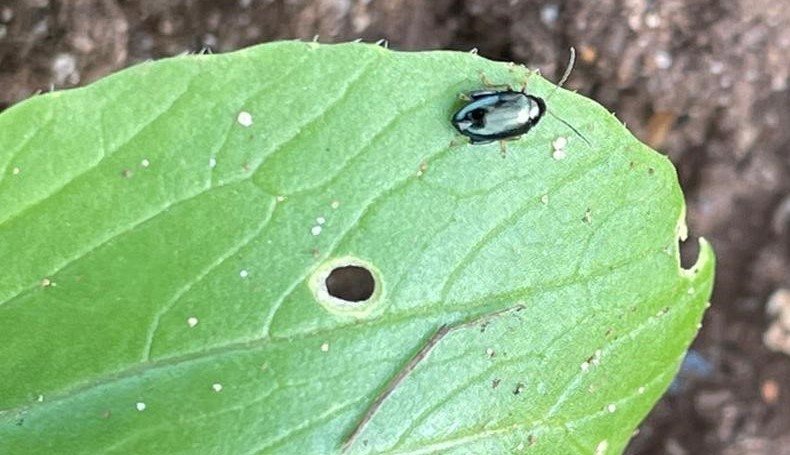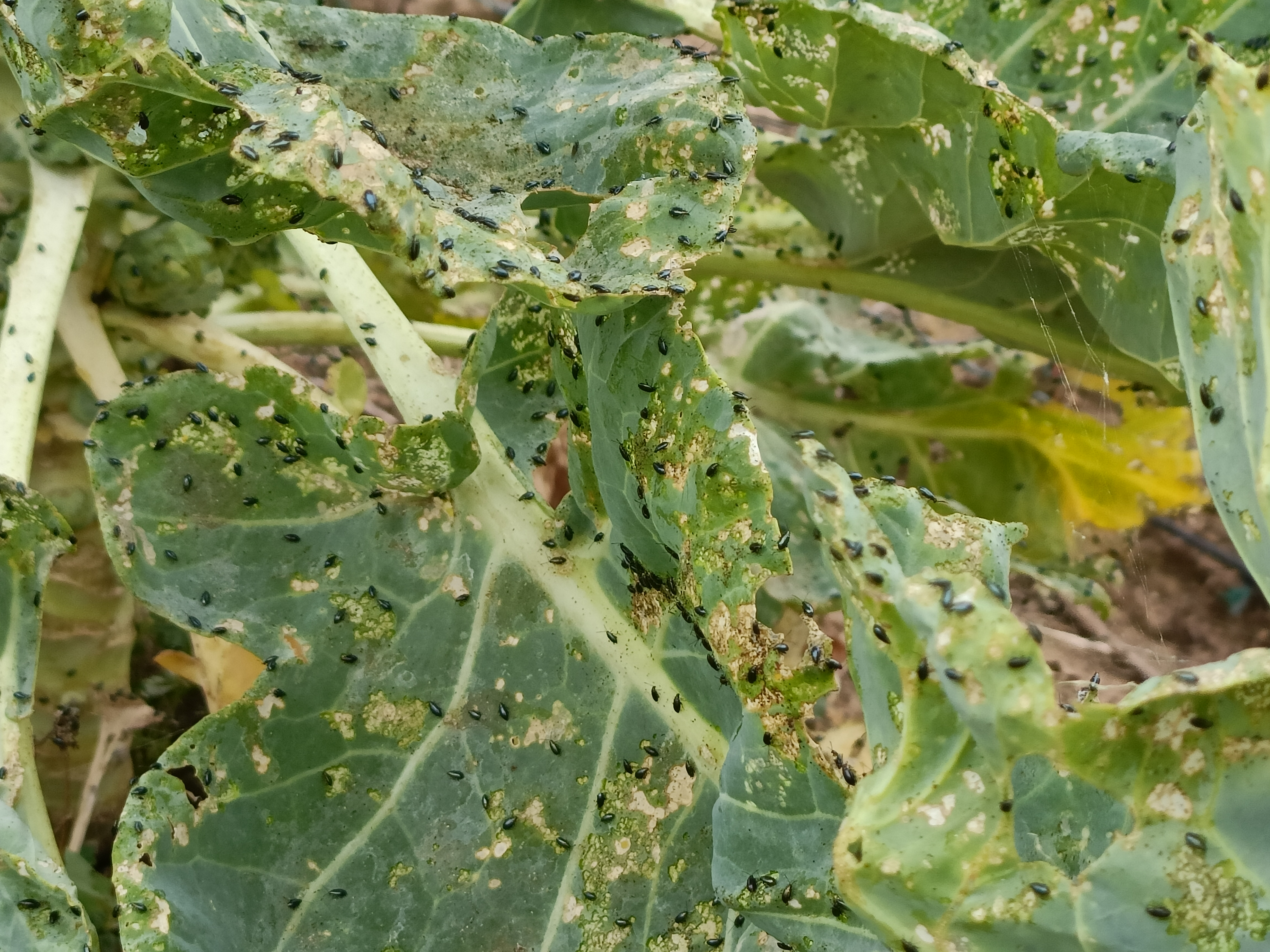Flea beetles
Presentation on AHDB-funded trials on flea beetle control in brassicas - February 2023
Cabbage stem flea beetle (Psylliodes chrysocephala)
During the summer, adult cabbage stem flea beetles (CSFB) become inactive and move to cool shaded places before returning to feed on brassica plants in the autumn. After a few weeks, eggs are laid, from which larvae emerge. These tunnel into the petioles of brassica plants throughout the winter and into spring depending on weather conditions. From late autumn the larvae migrate to the soil to pupate. The adults hatch from these pupae in summer. There is one generation per year.
Adult CSFB feeding shows up as distinct “shot” holes in leaves and is particularly a problem in seedlings and young plants. All brassicas can be affected but the plants most at risk are those grown in spring which are susceptible to the emerging adults and late summer/autumn which are susceptible to the adults returning to the crop to feed. The late summer/autumn crops are also susceptible to damage from the feeding larvae.
AHDB report 'Cabbage stem flea beetle (Psylliodes chrysocephala) control on oriental cabbage'

Phyllotreta flea beetles
Eight species of Phyllotreta (flea beetles) feed on brassicaceous crops and weeds in the UK and they tend to be considered together. The older literature says that the period of greatest activity is from 10th April – 20th May but more recently, damage appears to have occurred over a more extended period.
In 2021, we undertook a trial to evaluate bioinsecticides and insecticides for control of Phyllotreta flea beetles as part of the AHDB SCEPTREplus project.

